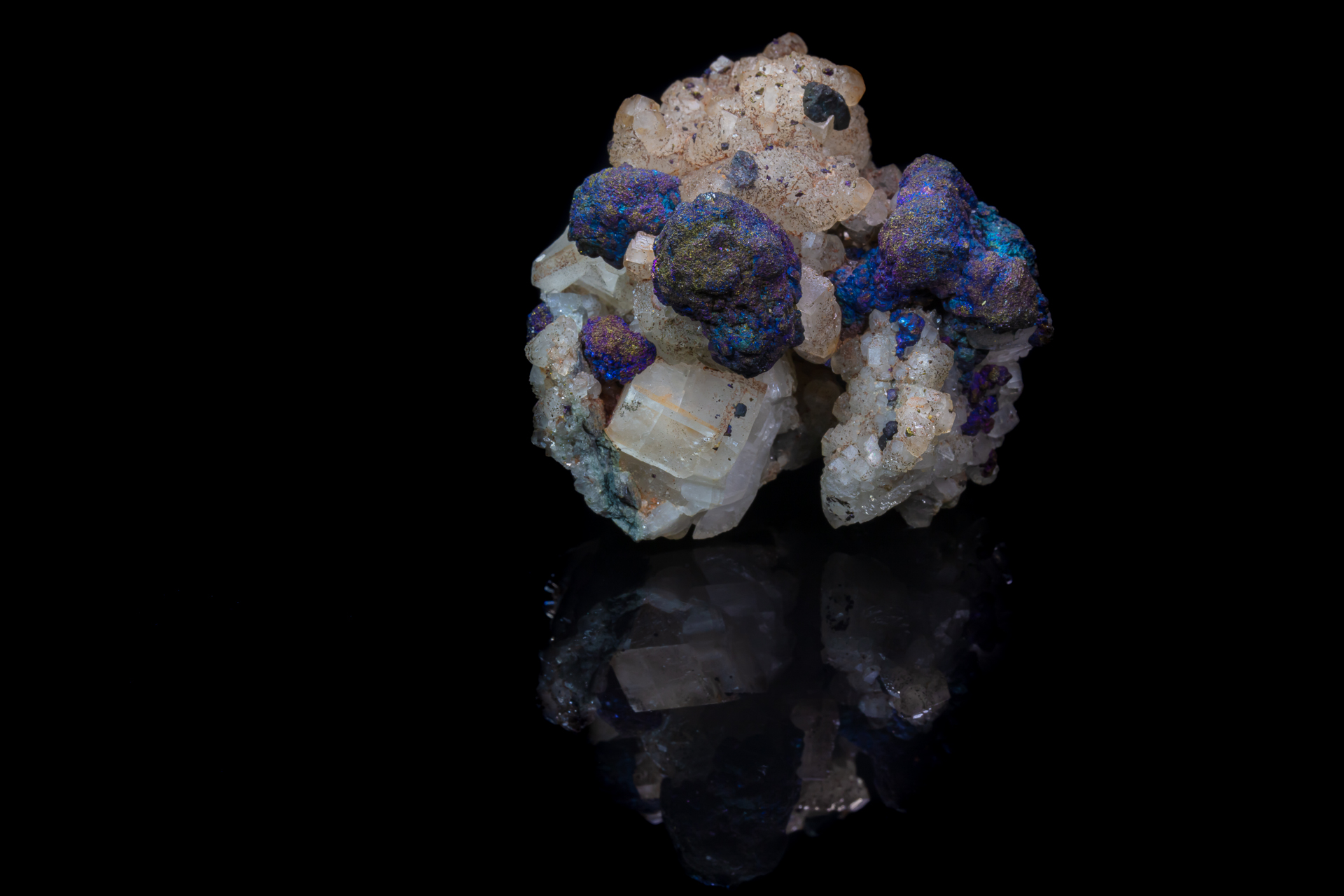Bornite
Formula: Cu5FeS4
Species: Sulfides
Colour: Copper-red to pinchbeck-brown, quickly tarnishing to an iridescent purplish surface.
Lustre: Metallic
Hardness: 3
Specific Gravity: 5.06 – 5.09
Crystal System: Orthorhombic
Name: Named “phillipsite” in 1832 by Wilhelm Sulpice Beudant. Renamed as bornite in 1845 by Wilhelm Karl von Haidinger in honor of Ignaz von Born (1742-1791), Austrian mineralogist and invertebrate zoologist.
Type Locality: Jáchymov, Karlovy Vary District, Karlovy Vary Region – Czech Republic
An important copper ore, typically found as massive or disseminated metallic grains and patches in sulphide ore deposits. It has a copper-reddish colour on fresh exposures which quickly tarnishes to a pinkish grey, through to an iridescent purple, crimson or blue and eventually black, after exposure to air and moisture, due to formation of very thin coatings of more oxidized minerals. It may be confused with other iridescent minerals, especially iridescently tarnished chalcopyrite, both often termed “peacock ore” when exhibiting such a tarnish. Bornite is a copper(I) iron sulphide, with Fe likely predominantly being trivalent, although with some charge transfer likely possible. Substantial variation in the relative amounts of copper and iron occurs and solid solution extends towards chalcopyrite (CuFeS2) and digenite (Cu9S5).

